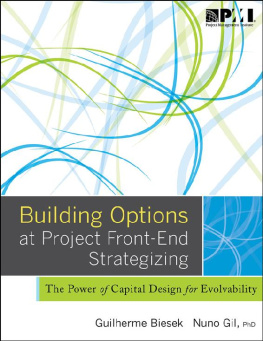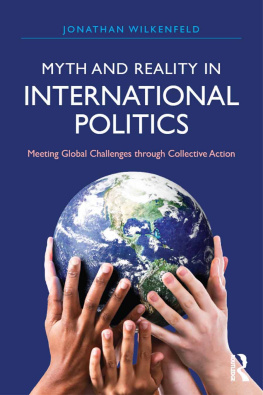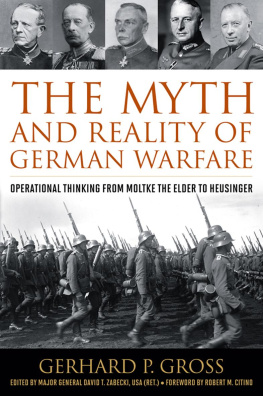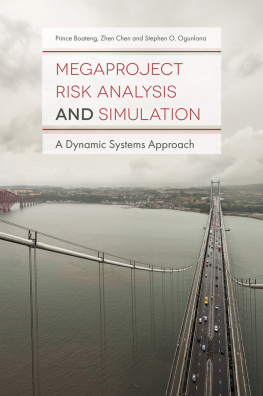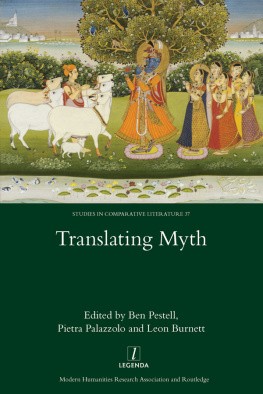Nuno Gil - Megaproject Organization and Performance: The Myth and Political Reality
Here you can read online Nuno Gil - Megaproject Organization and Performance: The Myth and Political Reality full text of the book (entire story) in english for free. Download pdf and epub, get meaning, cover and reviews about this ebook. year: 2017, publisher: Project Management Institute, genre: Politics. Description of the work, (preface) as well as reviews are available. Best literature library LitArk.com created for fans of good reading and offers a wide selection of genres:
Romance novel
Science fiction
Adventure
Detective
Science
History
Home and family
Prose
Art
Politics
Computer
Non-fiction
Religion
Business
Children
Humor
Choose a favorite category and find really read worthwhile books. Enjoy immersion in the world of imagination, feel the emotions of the characters or learn something new for yourself, make an fascinating discovery.
- Book:Megaproject Organization and Performance: The Myth and Political Reality
- Author:
- Publisher:Project Management Institute
- Genre:
- Year:2017
- Rating:4 / 5
- Favourites:Add to favourites
- Your mark:
- 80
- 1
- 2
- 3
- 4
- 5
Megaproject Organization and Performance: The Myth and Political Reality: summary, description and annotation
We offer to read an annotation, description, summary or preface (depends on what the author of the book "Megaproject Organization and Performance: The Myth and Political Reality" wrote himself). If you haven't found the necessary information about the book — write in the comments, we will try to find it.
Nuno Gil: author's other books
Who wrote Megaproject Organization and Performance: The Myth and Political Reality? Find out the surname, the name of the author of the book and a list of all author's works by series.
Megaproject Organization and Performance: The Myth and Political Reality — read online for free the complete book (whole text) full work
Below is the text of the book, divided by pages. System saving the place of the last page read, allows you to conveniently read the book "Megaproject Organization and Performance: The Myth and Political Reality" online for free, without having to search again every time where you left off. Put a bookmark, and you can go to the page where you finished reading at any time.
Font size:
Interval:
Bookmark:
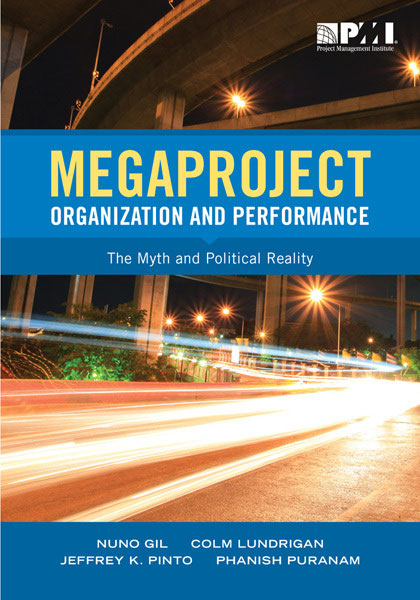

Project Investigator and Leading Author
Professor Nuno Gil
Manchester Business School, The University of Manchester
Co-investigators and Coauthors
Dr. Colm Lundrigan
Professor Jeffrey K. Pinto
Andrew Morrow and Elizabeth Lee Black
Chair in the Management of Technology
Black School of Business, Pennsylvania State UniversityBehrend
Professor Phanish Puranam
Roland Berger Chair Professor of Strategy and Organization Design at INSEAD
Library of Congress Cataloging-in-Publication Data has been applied for.
ISBN: 978-1-62825-176-0
Published by: Project Management Institute, Inc.
14 Campus Boulevard
Newtown Square, Pennsylvania 19073-3299 USA
Phone: +610-356-4600
Fax: +610-356-4647
Email: customercare@pmi.org
Internet: PMI.org
2017 Project Management Institute, Inc. All rights reserved.
PMI, the PMI logo, PMP, the PMP logo, PMBOK, PgMP, Project Management Journal, PM Network, and the PMI Today logo are registered marks of Project Management Institute, Inc. The Quarter Globe Design is a trademark of the Project Management Institute, Inc. For a comprehensive list of PMI marks, contact the PMI Legal Department.
PMI Publications welcomes corrections and comments on its books. Please feel free to send comments on typographical, formatting, or other errors. Simply make a copy of the relevant page of the book, mark the error, and send it to: Book Editor, PMI Publications, 14 Campus Boulevard, Newtown Square, PA 19073-3299 USA.
To inquire about discounts for resale or educational purposes, please contact the PMI Book Service Center.
PMI Book Service Center
P.O. Box 932683, Atlanta, GA 31193-2683 USA
Phone: 1-866-276-4764 (within the U.S. or Canada) or
+1-770-280-4129 (globally)
Fax: +1-770-280-4113
Email: info@bookorders.pmi.org
Printed in the United States of America. No part of this work may be reproduced or transmitted in any form or by any means, electronic, manual, photocopying, recording, or by any information storage and retrieval system, without prior written permission of the publisher.
The paper used in this book complies with the Permanent Paper Standard issued by the National Information Standards Organization (Z39.481984).
| 10 9 8 7 6 5 4 3 2 1 |
We would like to acknowledge the funding received from the 2014 Project Management InstituteSponsored Research Program and the 2015 Manchester Business School Research fund (recipient Nuno Gil). We also thank all the professionals who shared their knowledge and donated time to the research. Special thanks go to students, Mr. Okuk Owera and Ms. Rehema Msulwa, who helped to collect and analyze data. We also thank numerous academic colleagues and friends who took the time to read our working papers and give detailed feedback, including Andrew Davies, Ray Levitt, Sam MacAulay, Silvia Massini, Bruce Tether, and Graham Winch. Last but not least, we thank our fantastic editorial team, notably Kim Shinners, Kristin Dunn, and Carla Messikomer for all their support and perseverance in seeing this monograph come to fruition.
This report summarizes the insights of a three-year study on megaprojectsthe project-based organizations purposely formed to develop capital-intensive, large-scale infrastructure systems. Our aim was to further our understanding of what form of organizing work a megaproject is and investigate the extent to which we could trace empirical regularities in the performance of megaprojects back to their organizational structure. Our central claim is that megaprojects are a meta-organizationa network of legally independent actors collaborating under an identifiable system-level goal. As with any meta-organization, megaprojects are guided by a systems architect, a designated leader who steers the organization in pursuit of a higher-order goal. In the case of megaprojects, the systems architect is the project promoter, the actor who had the grand idea and provides leadership. The promoter can be a solo actor, such as a public agency, a government, a private firm, or a coalition of actors.
In this study, we conceptualize the megaproject organization as formed by two constituent parts: core and periphery. The core members control the strategic choices that define the project output and the development process structure. The core is made up of the promoter and multiple autonomous actors who have direct access to the strategic decision-making process because they control critical resources, including finance, political influence, regulatory power, knowledge of needs, and land. In contrast, the periphery is formed by suppliers selected by the promoter to execute the strategy agreed upon by the core members.
Within the core structure, the project promoter cannot use authority vested in ownership stakes or regulation to get things done. The promoter and the core participants may be unified by the system-level goal. But the core participants are legally independent actors with heterogeneous interests, beliefs, and knowledge bases, and see themselves as development partnersas such, they are willing to commit their own resources to the system-goal insofar as the promoter shares with them rights to directly influence strategic choice. Diffused power over strategic choice creates a pluralistic structure at the core. In these settings, a dominant coalition rarely emerges with sufficient power to impose their preferences on others. Hence, strategic choices are the outcome of negotiation and deliberative processes. In marked contrast, the vertical relationships between the project promoter and the suppliers at the periphery are governed by buyer-supplier contracts that simulate an authority hierarchy.
Armed with this conceptualization of a megaproject as a form of organizing work, we tackle the issue of performance. Deep-seated social norms establish that a successful megaproject is a project in which the scope is frozen early on in the planning stage in order to deliver the project during the implementation stage on time and within budget. These norms are rooted in the professionalization of the project management practice in the 1950s. Since then, the world has become much more crowded and interconnected by technology, but the norms have yet to adapt. Thus, it is hard to see how megaprojects today, with their pluralistic structure at the core, cannot fail in the eyes of third parties. This is troubling because megaprojects are a source of value creation. It is also unfair to the leaders of these complex enterprises who deserve our sympathy, not blame. By revealing the organizational structure of a megaproject, it is our hope to contribute to debunking the megaproject performance myth.
The empirical database informing this study includes several large-scale, capital-intensive infrastructure development projects. Our initial theoretical insights are grounded in four contemporaneous megaprojects in the United Kingdom: Crossrail and High Speed 2 railways, London Olympic Park, and the Heathrow Airport Terminal 2 (T2). These projects unfolded surrounded by the institutional context of an advanced economy with robust democratic institutions. We subsequently extend the validity of our claims to a developing economy context by studying large infrastructure development projects in Nigeria, India, and Uganda.
Font size:
Interval:
Bookmark:
Similar books «Megaproject Organization and Performance: The Myth and Political Reality»
Look at similar books to Megaproject Organization and Performance: The Myth and Political Reality. We have selected literature similar in name and meaning in the hope of providing readers with more options to find new, interesting, not yet read works.
Discussion, reviews of the book Megaproject Organization and Performance: The Myth and Political Reality and just readers' own opinions. Leave your comments, write what you think about the work, its meaning or the main characters. Specify what exactly you liked and what you didn't like, and why you think so.


